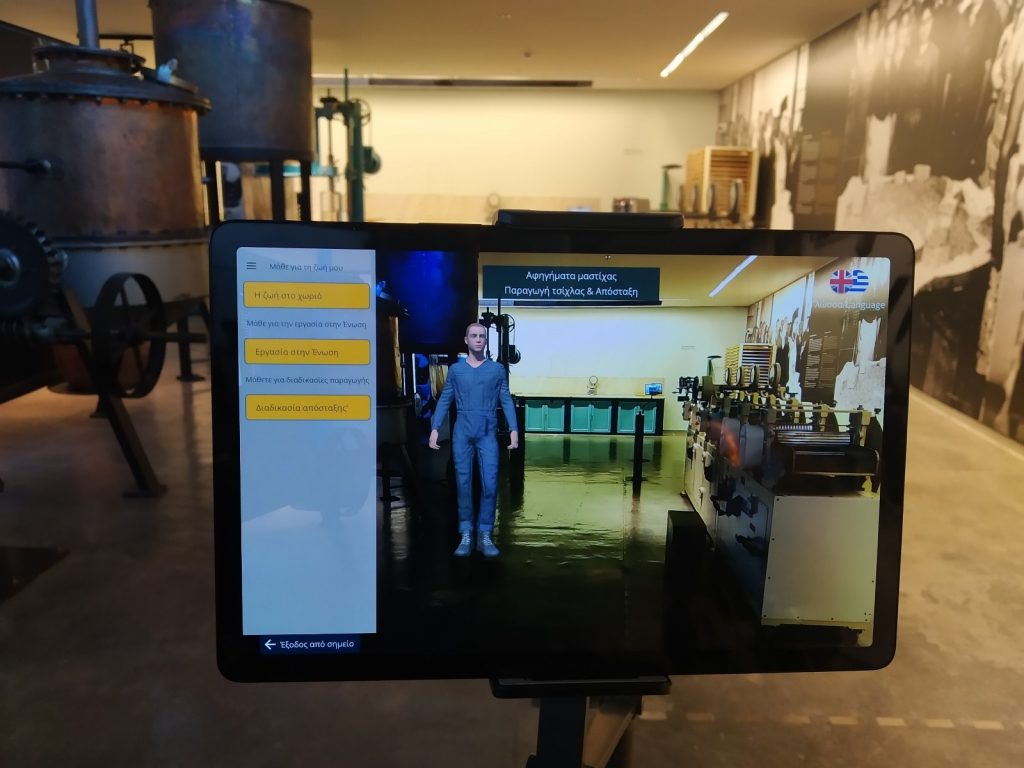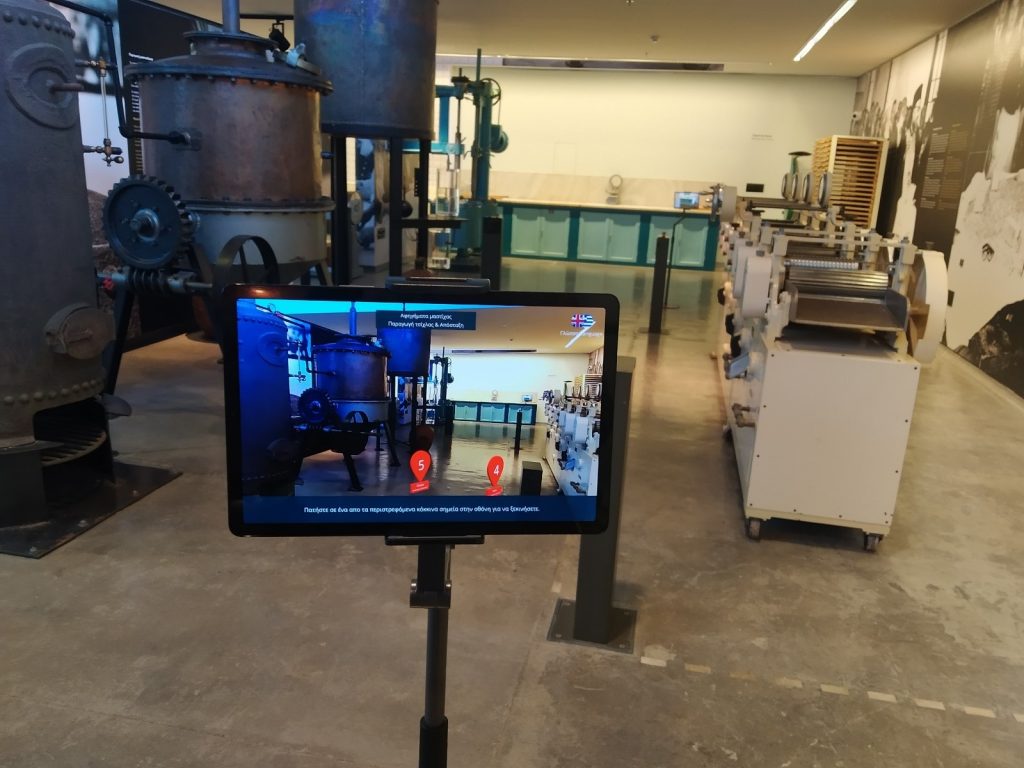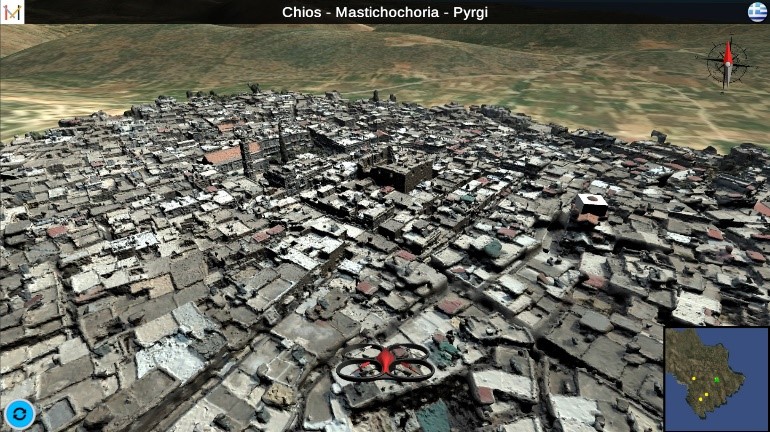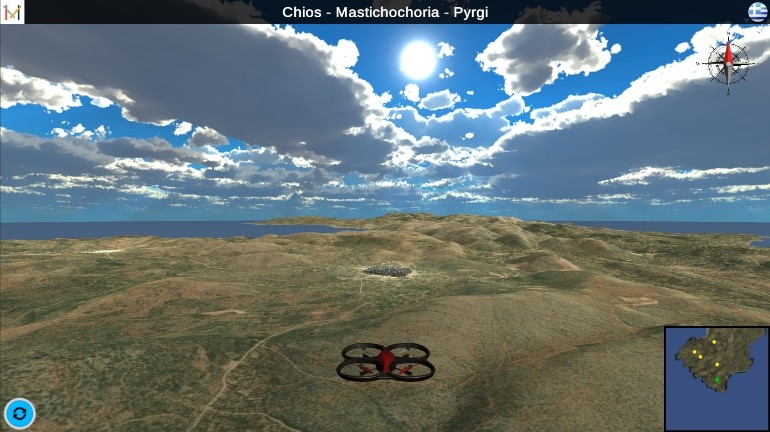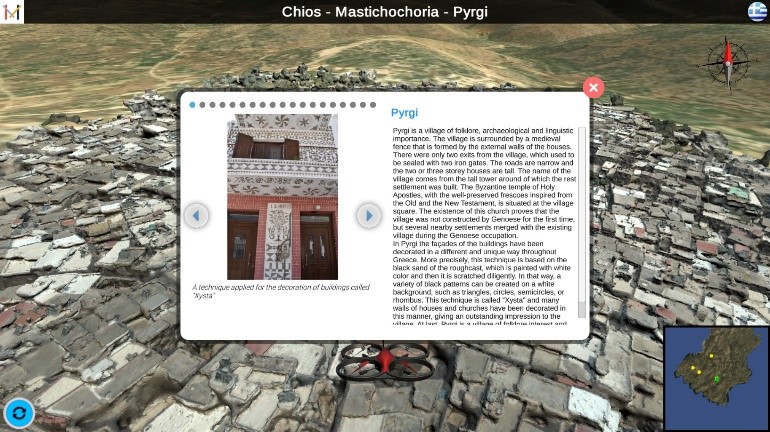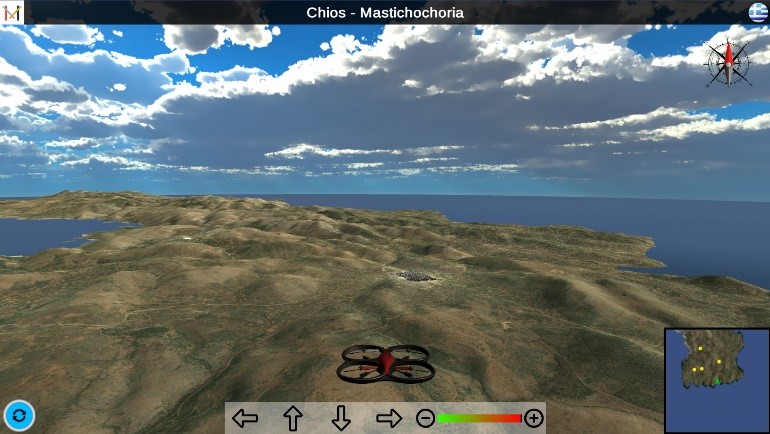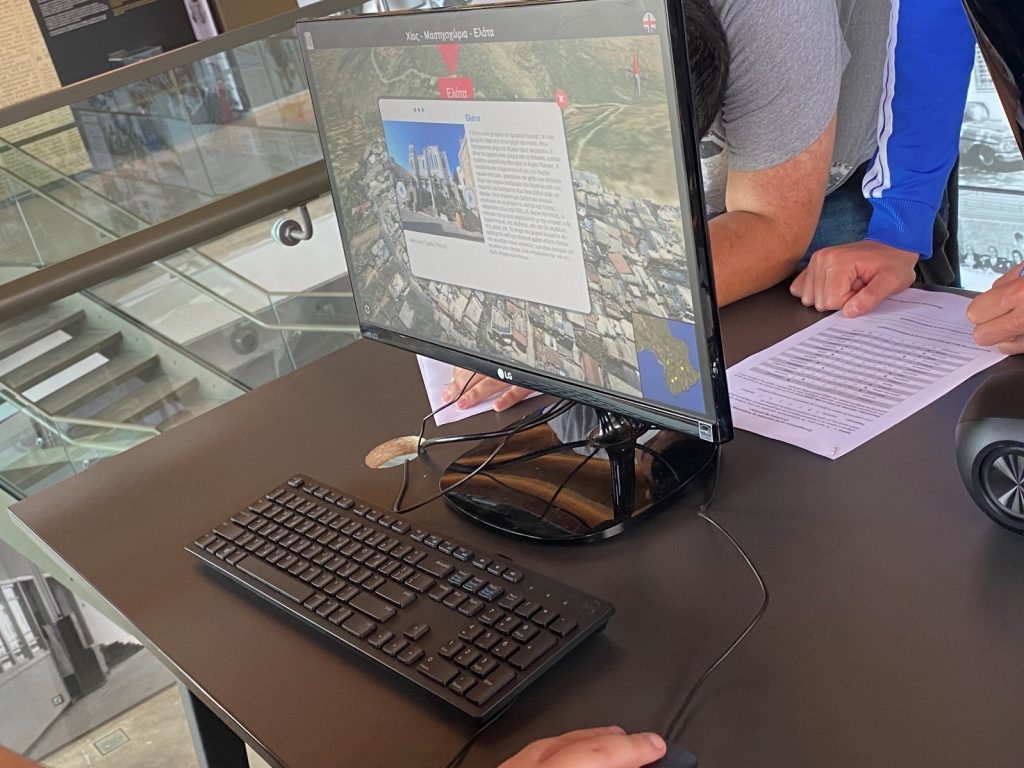The exhibition
Location
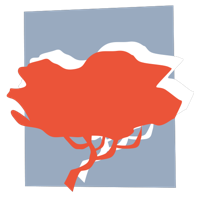
The Chios Mastic Museum has a strong geographical link to the HC it represents. It is built at the south of the Greek island of Chios, whilst the craft is unique to that particular location. Part of the Piraeus Bank Group Cultural Foundation (PIOP), the Chios Mastic Museum is one of a series of craft-related museums across Greece. Mastíha, or mastic, is a product from the mastic tree which exclusively grows in the south-west of Chios.
This HC related to mastic is therefore highly localised (indigenous craft) and part of the fabric of local life. The 24 villages from where mastíha is harvested are known as Mastihochoria, or Mastic Villages, their name being an indication of the importance of mastíha for the region. It is expected that the pilot at the Chios Mastic Museum will explore the impact of hyper-locality, as well as the challenges related to capturing a craft that is highly interwoven with the everyday life of a region. In addition, this pilot offers the possibility of exploring unique traits related to an outdoors craft that relies on cottage industry, but is also centralised and organised through the Association of Mastic Producers of Chios.
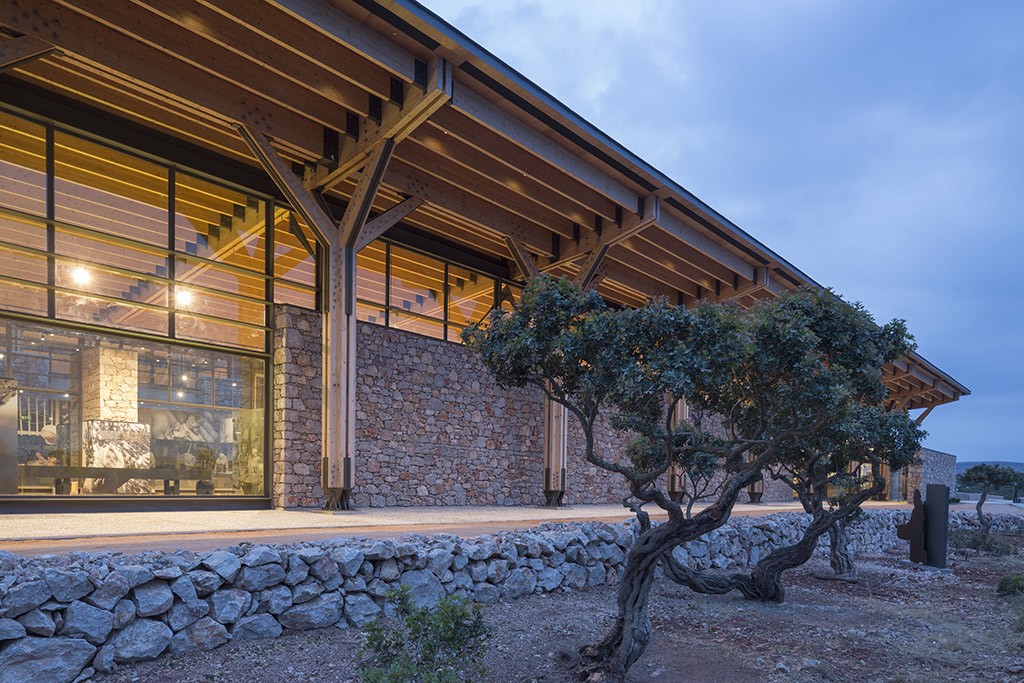
Image courtesy of Pireaus Bank Group Cultural Foundation
The production of mastíha, an ancestral practice, unaltered over time, is a family occupation that requires laborious care throughout the year, and in which men and women of all ages participate on equal terms. Tasks are divided across genders and ages. Men take care of plant fertilisation, pruning, as well as soil and plant preparation. Women (and, in the past, children too) harvest and prepare the raw product, while older members of the community are responsible for transmitting know-how down the generations. The culture of mastíha represents a comprehensive social event, around which networks of alliances and mutual help have been established in society. Traditions and legends survive in the vernacular language, some of religious nature, such as the one about the tree that shed tears when seeing the death of Saint Isidore. Those from this culture see Mastic as part of their identity, which drives their feeling of belonging to the community. The know-how for growing mastíha follows certain rules and traditional characteristics, which ensure its authenticity, while also promoting improvisation and individuality. The craft and local life still witness age-old traditions related to the production of mastíha, even if the cultivation and application of mastíha are constantly subject to innovation.
Experiences
Narrations in the Mastic Factory
The installation at the mastic factory exhibition room is comprised of four tablet devices mounted on floor mounter bases that are located in four main spots of the museum. From each tablet, a specific area of the museum is covered and augmented through the camera of the tablet with hot spots. In each hot spot, one or more stories to be told exist. By selecting the hotspot, a VH appears that is the visual twin of a persona used to work in the factory and operating one of the machines in visual approximation to its location. When the hot spot is selected the VH appears in the factory through the camera of the table to narrate his life story and his daily life and work at the factory.
Craft presentations in the mastic field
One of the requirements of presenting the craft was to display its seasonality. Very often visitors do not understand the complete process of mastic cultivation. Another necessity for the museum was the exploitation of the external spaces and the beautiful mastic tree field which is often overlooked by the visitors. It became also evident that this “guided” tour (it is a simple and straight path through the phases of mastic cultivation, harvesting, and cleaning) is a perfect example of the yearlong process. Visitors of the rural space outside the museum can experience mastic cultivation in the field through their mobile devices. The application facilitates an AR-capable device to recognize metallic sculptures that exist in the rural space of the museum. Through the camera, these sculptures become alive to present typical cultivation activities. The following figure presents an example of app screens with an emphasis in the middle on the AR augmentation of the sculpts that are part of the mastic field with animations of the cultivation process.
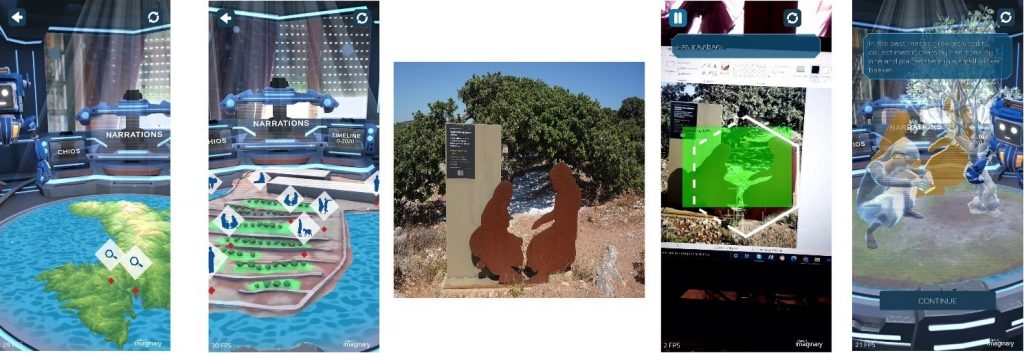
Craft Training
Craft training is intended for demonstrating the cultivation activities to the visitors of the museum thus providing a more immersive experience. This application was installed on the ground floor of the museum in the multimedia space. The installation is comprised of a personal computer and a monitor together with a depth sensor for tracking the user’s actions. The user stands in front of the installation and follows the instructions provided on the screen to mimic craft actions. An example of this process is presented in the following figure.
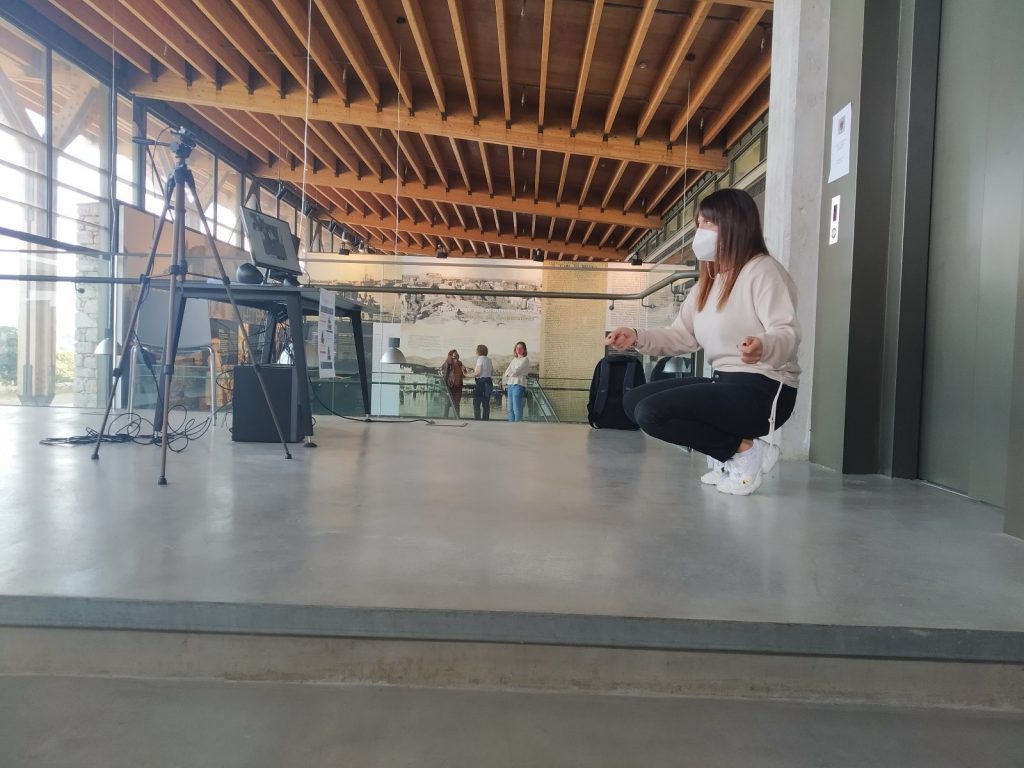
Presentation of geographic context
Information on geographical location and context shows environmental aspects affecting craft practice and development. We developed Airborne an immersive flight simulator allowing users to fly over various mastic villages of Chios. During the flyover, users can stop at each village and retrieve multimedia and text information related to those villages. Airborne is installed in the multimedia room of the museum. The setup was very simple and straightforward as it involved a desktop computer set. There are two options available (a) automated tour and (b) flight simulator. The automated tour targets users that wish to explore the mastic villages in a movie-like way while the flight simulator is more gameplay-oriented since users have control of the virtual drone flying on Chios sky and are free to explore information in any way they like. In the future, the setup will be updated with a large touch-enabled screen to enhance the gameplay of the installation.

